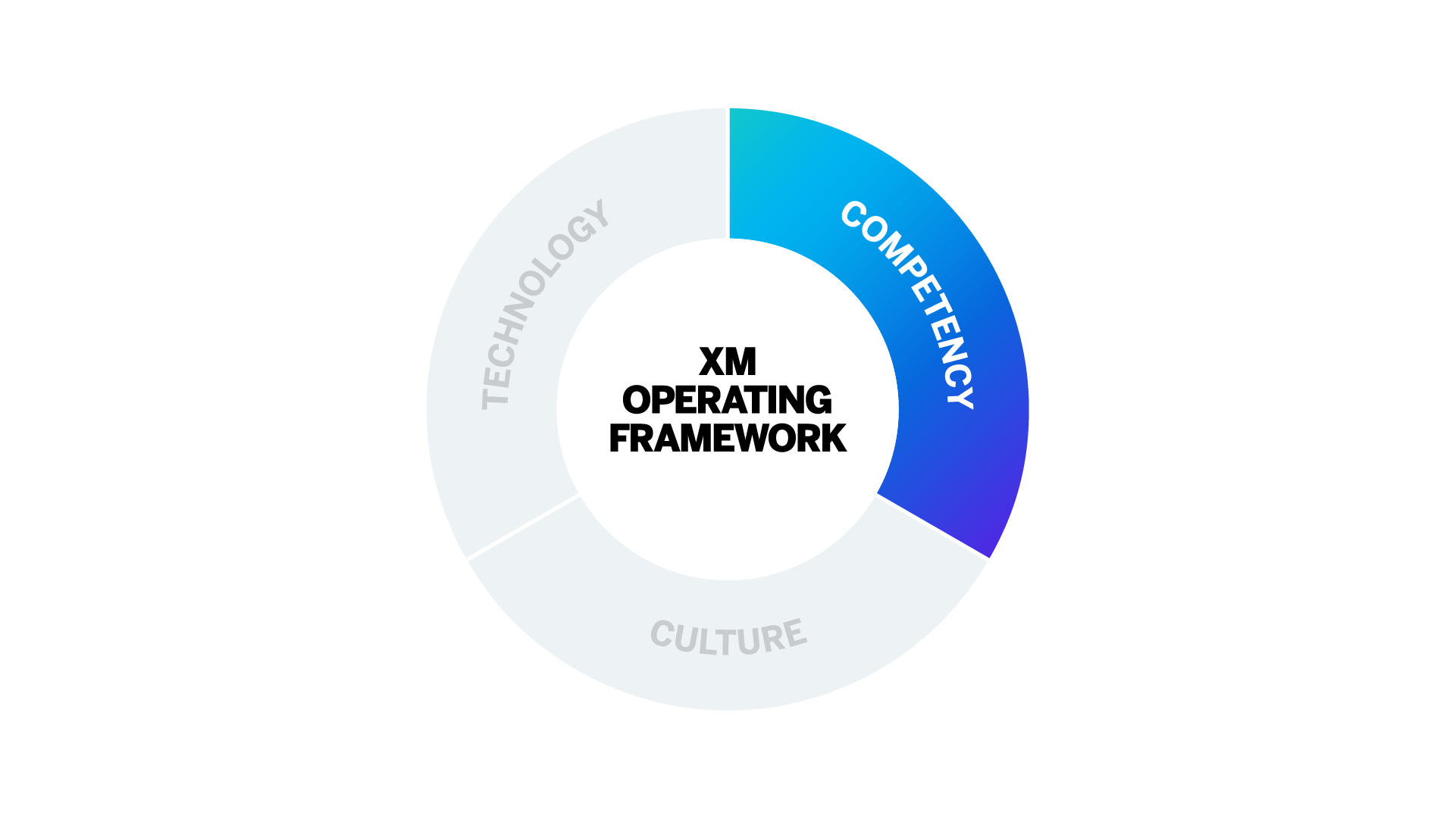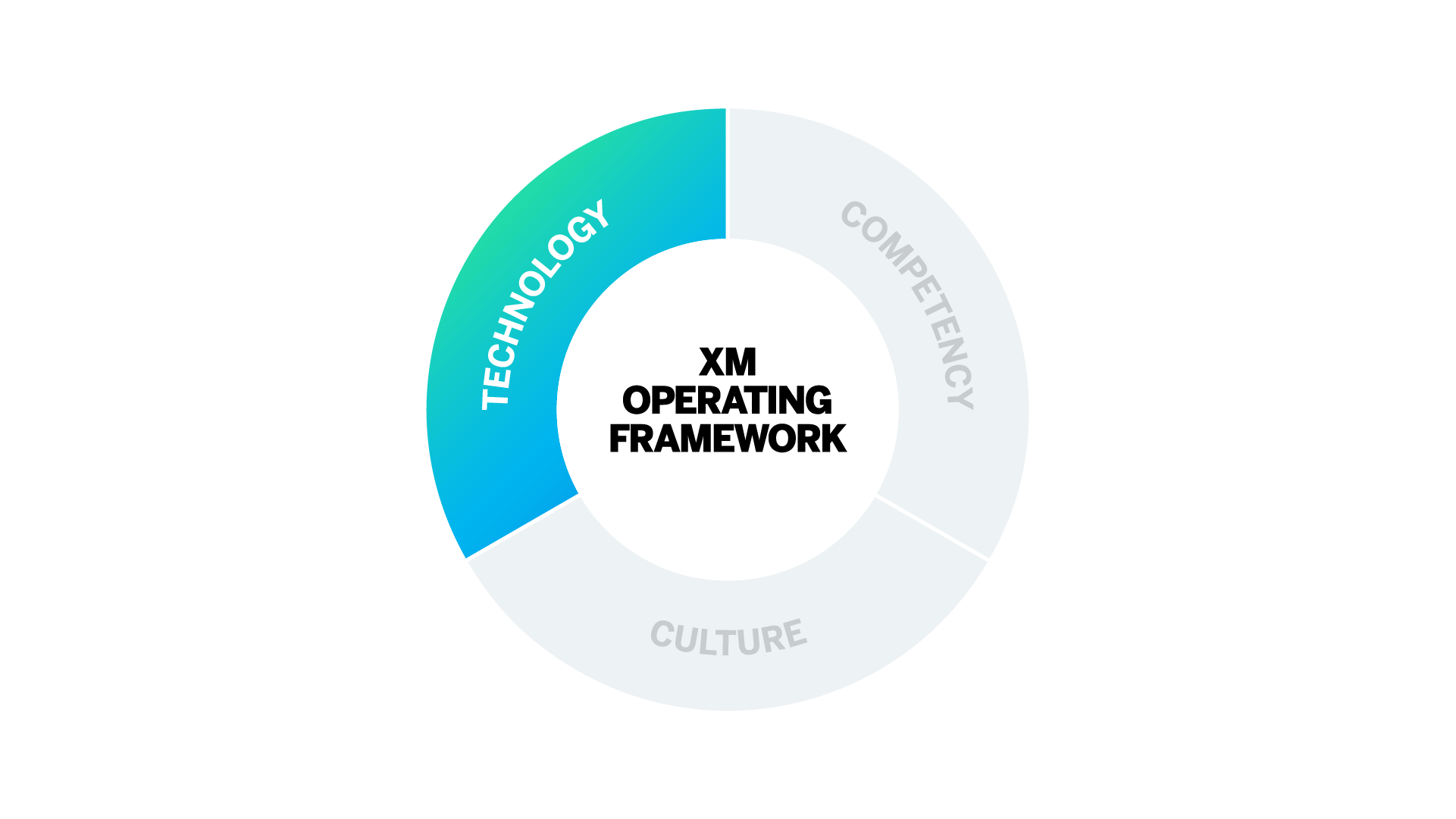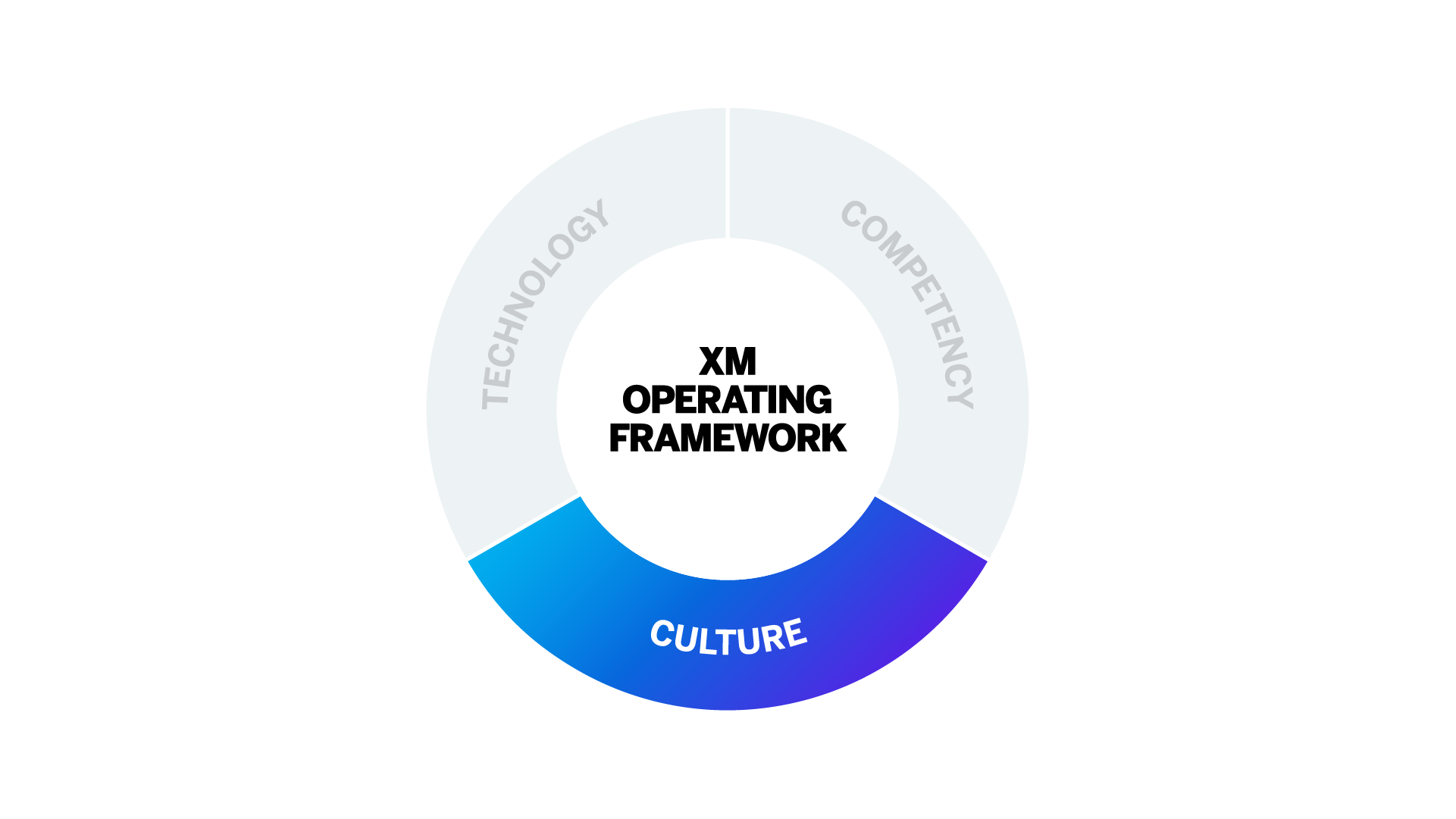XM (Experience Management) is changing the way businesses operate. Understanding the full landscape of business has never been more important or more accessible than in the face of XM.
In this section, you will learn the foundations of XM.
In this article:
-
What is Experience Management
-
The Operating Framework for Experience Management
Experience Management (XM) is a discipline that helps organizations measure and improve the experiences delivered to different stakeholders across an enterprise.
As a discipline, XM helps organizations deliver differentiated experiences by continuously listening, propagating insights, and rapidly adapting to meet the changing needs and expectations of customers, employees, partners, and other people in an organization’s XM ecosystem.

When XM is adopted across an organization, it creates a constant flow of information to sense and interpret what is happening around an organization and act on the insights uncovered at an increasingly faster pace.
Because of this, the first step is to acknowledge that a business operates through experiences, internal and external.
Experiences can make or break an organization's success. They can separate those that out-perform the market from the average performance. Even seemingly small gaps in expectation versus reality can manifest into large issues at aggregate, leading to lower engagement or lost loyalty which ultimately impacts financial performance.
Optional Additional Learning: Watch the XM Institute video introducing Experience Management on this page.
There are three key components of XM that a business needs to invest in to be successful in Experience Management: Competency, Culture, and Technology. These are defined as follows:


The skills and actions that establish XM as a discipline across the organization. There are six XM competencies: Lead, Realize, Activate, Enlighten, Respond, and Disrupt. Organizations adopt XM by mastering these competencies that are enabled by technology and nurtured by culture.
For example:
-
Defining and communicating a clear XM strategy and program roadmap outlining the projects and workstreams to improve experiences.
-
Identifying core XM metrics and defining goals against which to measure the progress of XM efforts.
Optional Additional Learning: You can watch this XM Institute video about the six XM Competencies, click here.

A platform that empowers an organization to collect, understand, and take action on the combination of experience and operational data. As an organization builds its XM competencies, it will naturally be collecting more X-data, using more analytics, and distributing more customized insights. This only happens with the support of technology.
For example:
-
For XM to scale, an organization needs a platform that infuses actionable intelligence throughout an organization. As the organization builds its XM competencies, it will naturally be collecting more X-data (Experience Data), so the platform needs to become the primary system of record for all of that X-data.
-
Since XM is a discipline woven across the entire organization, it requires a platform that can manage all of the experience data. This platform needs to be powerful and easy to use by the increasing number of employees who will have access to and need to take action on the insights generated.

Mindsets and beliefs that nurture XM-centric behaviors across an organization. The culture of an organization can either accelerate or inhibit the spread of XM competencies. Companies need to foster an environment that encourages XM-centric mindsets and behaviors in their leaders and employees.
For example:
-
One characteristic of an XM culture is that it is human-centric. Because experiences are created and consumed by human beings, it requires a culture where everyone demonstrates empathy for its customers and its employees.
-
The more that an organization is comfortable with making improvements without significant internal resistance, the easier it will be for XM competencies to take hold. An XM culture is also change-minded, meaning it creates a bias for embracing ongoing improvements and innovations.
Optional Additional Learning: You can learn more about XM and complete an XM Maturity self-assessment by visiting the XM Institute (click here).
Optional Additional Learning: Visit the Experience Basecamp video series course dedicated to Experience Management (click here).